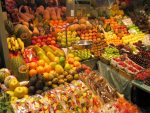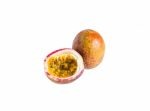Fresh cut vegetables and fruit all suffer the same issues – browning ! It makes them look unattractive and shortens not only their visual appeal but also their nutritional value. The problem is especially acute for white produce such as chicory or stems say on lettuce. Enzymatic browning which is caused by polyphenol oxidase, peroxidases etc. are released as soon as any part of the vegetable or fruit is cut. They then catalyse a series of damaging reactions producing discolouration.
There are three types of treatment used to reduce browning and so prolong minimally processed vegetables and fruit generally. The first involves washing with a variety of chemical treatments. The processor has substances such as the organic acids to apply such as ascorbic acid, citric and tartaric acids which lower the pH to slow the oxidation reactions that occur and inhibit enzymic browning. There are also treatments selected from chlorine gas, dilute hypochlorite solutions, hydrogen peroxide gas, calcium ion solutions, sulphites, ozone and electrolysed water (Oms-Oliu et al., 2010).
Some of the additives are not as popular as they once were. Chlorine for example has been linked to the formation of carcinogenic chlorinated compounds. Sulphites have also been questioned for their health issues. Napoleon famously offered a prize to anyone who could find a replacement for sulphite used in wine. He was particularly sensitive to the presence of sulphite because he suffered a form of asthma. Back in 1986, the USA’s Food & Drink Administration (FDA) stopped the application of sulphites to raw and fresh produce because of the increasing number of asthma attacks linked to this material. The regulations regarding the use of any additive are regularly checked and revised in the light of new data.
Edible films and coatings are a second choice. These are based on protein or polysaccharide/carbohydrate polymeric ingredients that form a physical or semi-permeable barrier to oxygen ingress (Rojas-Graü et al., 2008). They can also be coupled to the application of various additives such as calcium and have been used on protecting pineapple chunks for example (Benitez et al., 2014). Alginates, pectins, starch films have all been tested. Banana slices are readily prone to browning but this can be delayed with combinations of packaging and various chemical dips (Bico et al., 2009).
A second technique involves modified-atmospheric packaging (MAP) coupled with heat processing (Rico et al., 2007). A number of bagged salads and cut fruits now use this packaging technology in a variety of ways using various gas types to exclude oxygen and so slow down browning (Saxena et al., 2008).
There is renewed interest in more novel anti-browning agents. Aqueous extracts of chamomile have been applied to apple slices (Wessels et al., 2014) and chemical dips using sprays of cinnamon oil with vacuum packaging has apparently reduced browning of fresh-cut lotus root.
References
Benitez, S., Soro, L., Achaerandio, I., Sepulcre, F., Pujolá, M. (2014) Combined effect of a low permeable film and edible coatings or calcium dips on the quality of fresh-cut pineapple. J Food Process Eng 37(2) pp. 91-99.
Bico, S.L.S., Raposo, M.F.J., Morais, R.M.S.C., Morais, A.M.M.B. (2009) Combined effects of chemical dip and/or carrageenan coating and/or controlled atmosphere on quality of fresh-cut banana. Food Control 20(5) pp. 508-14.
Klaiber, R.G., Baur, S., Wolf, G., Hammes, W.P., Carle, R. (2005) Quality of minimally processed carrots as affected by warm water washing and chlorination. Innov Food Sci Emerg Technol 6(3) pp. 351-62.
Oms-Oliu, G., Rojas-Graü, M.A., González, L.A., Varela, P., Soliva-Fortuny, R., Hernando, M.I.H.H., Munuera, I.P., Fiszman, S., Matín-Belloso, O. (2010) Recent approaches using chemical treatments to preserve quality of fresh-cut fruit: A review. Postharvest Biol. Technol. 57(3) pp. 139-48.
Rojas-Graü, M.A., Tapia, M.S., Martín-Belloso, O. (2008) Using polysaccharide-based edible coatings to maintain quality of fresh-cut Fuji apples. LWT-Food Sci. Technol. 41(1) pp. 139-47.
Saxena, A., Bawa, A.S., Raju, P.S. (2008) Use of modified atmosphere packaging to extend shelf-life of minimally processed jackfruit (Artocarpus heterophyllus L.) bulbs. J. Food Eng 87(4) pp. 455-66.



Leave a Reply